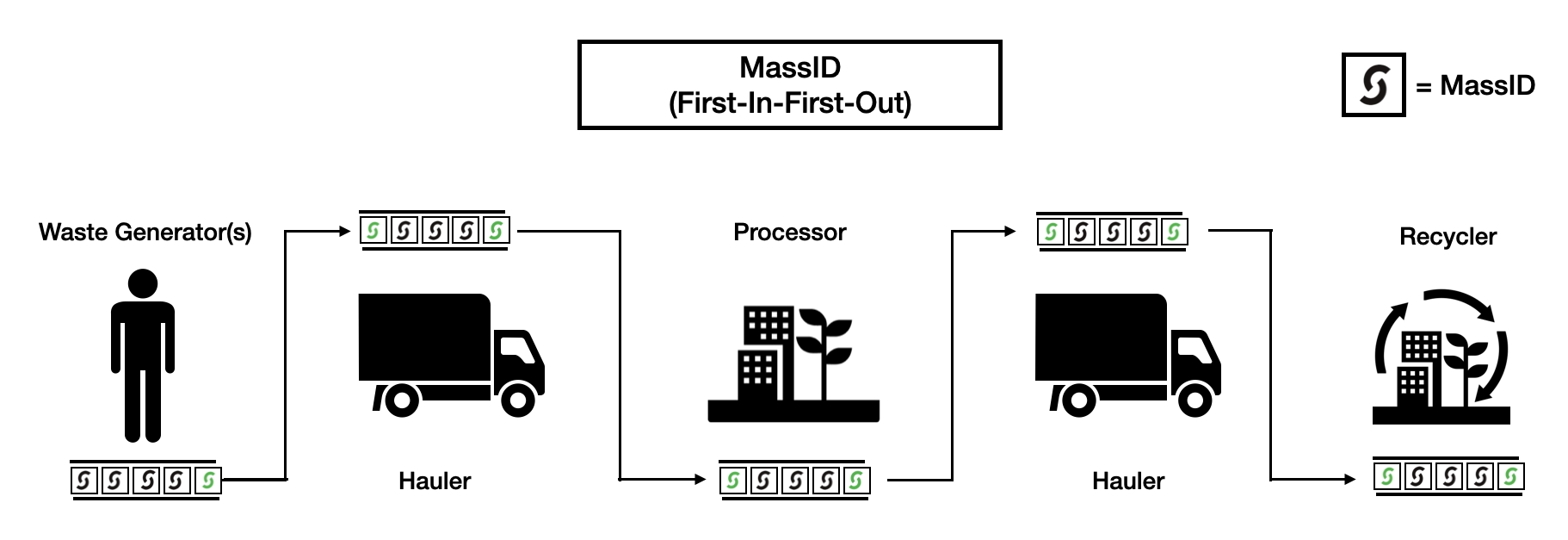MassID Notation
A MassID is presented as follows:

This code explains how a MassID is read. In this example, the MassID would represent a unit of glass of subtype color amber (#1) sourced in the state of Florida, USA; followed by a unique code. A split ID would identify a MassID that was split either to fill a shipment order carrying more IDs than are available in a Processor’s inventory or when it is packaged into a Tokenized Recycling Credit. (See MassID Splits section for more information.)
Unlike product supply chains where units, boxes, crates and shipping containers have barcodes or QR codes for tracking each consumer good, waste is typically fungible and sorted based on mass type. MassIDs represent ownership and responsibility over a unit of waste mass, therefore, the existence of a waste mass must be agreed upon by two parties and the chain of custody must track MassID responsibility among participants until it is recycled. Proof-of-Physical work recorded through georeferenced logistics service orders allow for changes in record and custody of MassIDs, improving the data point each time a validator performs a logistics workflow. MassIDs are stored in each participant’s inventory (wallet address) and transferred on a First-In-First-Out (FIFO) basis upon completion of each logistics operation:

Only MassIDs that reach a certified recycling/composting facility and which have undergone validation (Proof-of-Authority) at each point along the waste supply chain, become available as recycling credits. Third-party Zero Waste Auditors perform a final review of the recycler's operation and the chain of custody of each MassID before recycling credits become tokenized as TRCs and TCCs.
Last updated